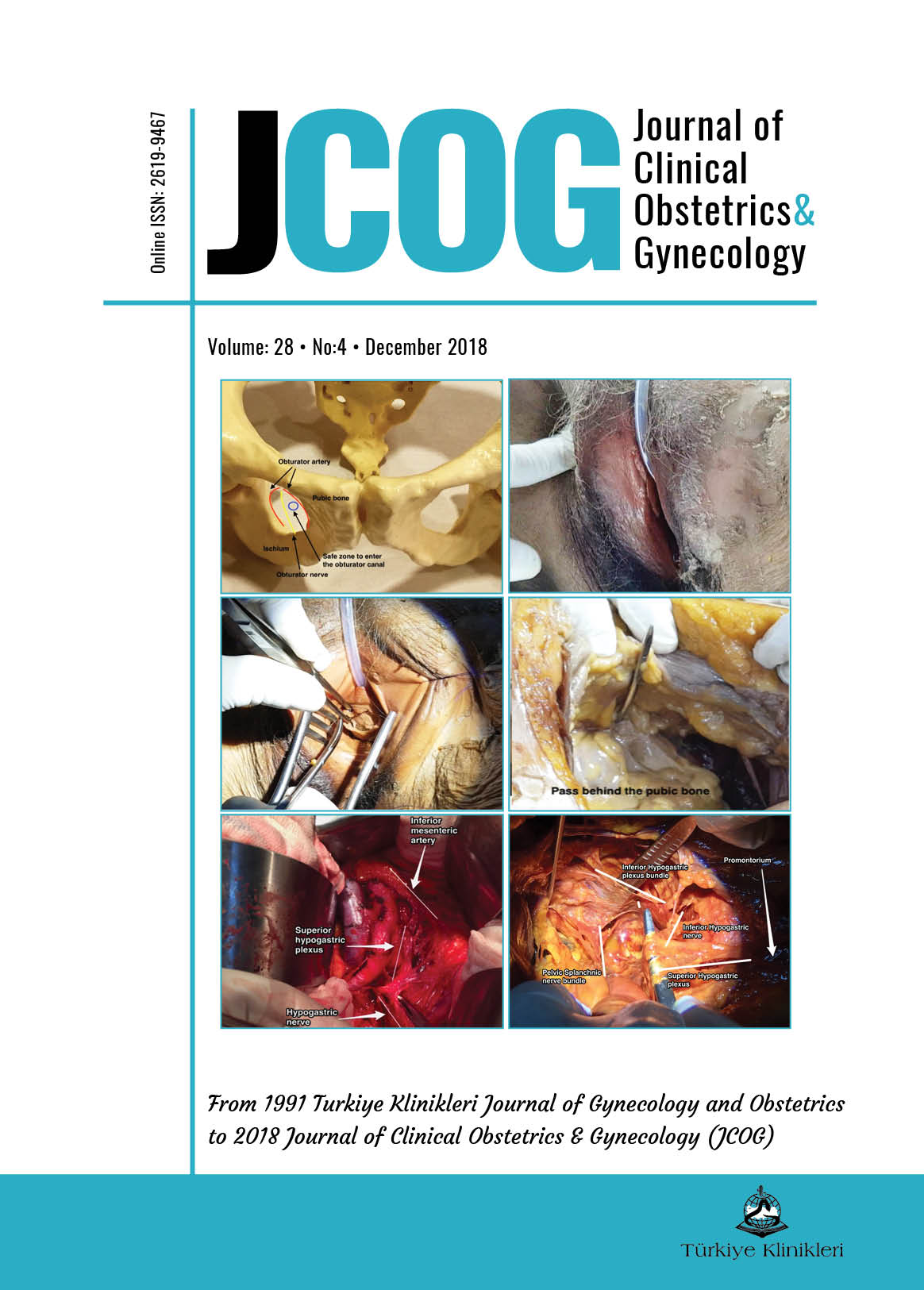Open Access
Peer Reviewed
ORIGINAL RESEARCH
2142 Viewed1232 Downloaded
The Effect of Non-Cavity-Distorting Myomas on the Outcomes of Stimulated Intrauterine Insemination in Unexplained Infertility
J Clin Obstet Gynecol. 2018;28(4):140-5
DOI: 10.5336/jcog.2018-63470
Article Language: EN
Article Language: EN
Copyright Ⓒ 2025 by Türkiye Klinikleri. This is an open access article under the CC BY-NC-ND license (http://creativecommons.org/licenses/by-nc-nd/4.0/)
ABSTRACT
Objective: To investigate the relationship between reproductive outcomes and noncavity-distorting uterine myomas in women with unexplained infertility and undergoing ovulation induction and intrauterine insemination (OI-IUI). Material and Methods: Women between 18-40 years of age with regular ovulatory cycles and bilateral tubal patency as detected on hysterosalpingography (HSG) and with spouses having total progressive motile sperm (TPMSS) counts >5 million on spermiogram analysis, were included in this study. The number of women with noncavity-distorting myomas, as detected using ultrasonography, were recorded. The frequencies of pregnancies after OI-IUI, ectopic pregnancies, abortions, clinical pregnancies, and live births were compared between women with non-cavity-distorting myomas and those without myomas. Results: A total of 857 cycles of OI-IUI were administered to 436 patients, resulting in 110 pregnancies. Non-cavity-distorting myomas were recorded in 27 subjects. Using multivariate logistic regression analysis, the presence of non-cavity-distorting myoma significantly affected pregnancy (p<0.05). Conception (p=0.008), clinical pregnancy (p=0.034), and live birth rates (p=0.037) were significantly higher in patients without fibroids than those with fibroids. Conclusion: Conception, clinical pregnancy, and live birth rates were significantly higher in patients without uterine fibroids than those with fibroids. These findings suggest that myomas might have negative effects on fertility outcomes.
Objective: To investigate the relationship between reproductive outcomes and noncavity-distorting uterine myomas in women with unexplained infertility and undergoing ovulation induction and intrauterine insemination (OI-IUI). Material and Methods: Women between 18-40 years of age with regular ovulatory cycles and bilateral tubal patency as detected on hysterosalpingography (HSG) and with spouses having total progressive motile sperm (TPMSS) counts >5 million on spermiogram analysis, were included in this study. The number of women with noncavity-distorting myomas, as detected using ultrasonography, were recorded. The frequencies of pregnancies after OI-IUI, ectopic pregnancies, abortions, clinical pregnancies, and live births were compared between women with non-cavity-distorting myomas and those without myomas. Results: A total of 857 cycles of OI-IUI were administered to 436 patients, resulting in 110 pregnancies. Non-cavity-distorting myomas were recorded in 27 subjects. Using multivariate logistic regression analysis, the presence of non-cavity-distorting myoma significantly affected pregnancy (p<0.05). Conception (p=0.008), clinical pregnancy (p=0.034), and live birth rates (p=0.037) were significantly higher in patients without fibroids than those with fibroids. Conclusion: Conception, clinical pregnancy, and live birth rates were significantly higher in patients without uterine fibroids than those with fibroids. These findings suggest that myomas might have negative effects on fertility outcomes.
MENU
POPULAR ARTICLES
MOST DOWNLOADED ARTICLES





This journal is licensed under a Creative Commons Attribution-NonCommercial-NoDerivatives 4.0 International License.










